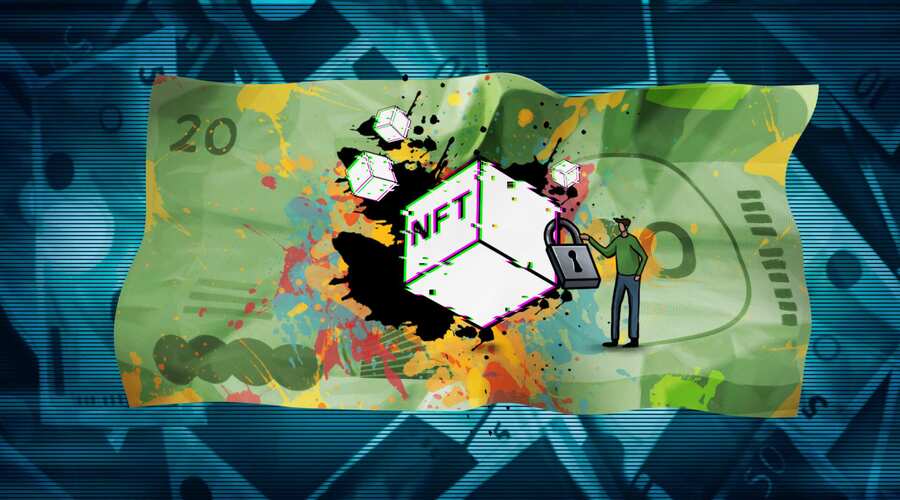Non-Fungible Tokens have gained significant popularity in recent years, revolutionizing the digital art and collectibles market. However, concerns about their environmental impact have emerged along with their meteoric rise. This article delves into the environmental footprint of NFTs, exploring energy consumption, carbon emissions, and other ecological considerations associated with their creation and transactions. By understanding the environmental impact of NFTs, we can assess their sustainability and work towards minimizing their ecological footprint.
Understanding NFTs
NFTs, or Non-Fungible Tokens, are digital assets representing ownership or proof of authenticity of a particular item or piece of content. Unlike cryptocurrencies such as Bitcoin or Ethereum, NFTs are indivisible and unique. They are built using blockchain technology, providing a transparent and decentralized system for verifying ownership and transaction history.
The unique properties of NFTs have made them a sought-after medium for artists, collectors, and enthusiasts. Artists can monetize their digital creations, and collectors can own exclusive digital items. However, the increasing popularity of NFTs has raised concerns about their impact on the environment.
Blockchain Technology and Proof-of-Work

NFTs are built on blockchain networks, such as Ethereum, which rely on a consensus mechanism called proof-of-work. This mechanism involves solving complex mathematical problems to validate and secure transactions. However, proof-of-work is energy-intensive, as it requires powerful computers to compete for block rewards.
As the popularity of NFTs increases, so does the demand for blockchain transactions, leading to a significant energy footprint. The energy consumption of blockchain networks is a crucial factor in assessing the environmental impact of NFTs.
The Energy Consumption Challenge
One of the primary concerns regarding NFTs is their significant energy consumption. The process of minting and trading NFTs requires powerful computers and networks to perform complex computations. As a result, large amounts of electricity are consumed.
It is important to note that the energy consumption of NFTs is directly linked to the underlying blockchain technology. Blockchain networks like Ethereum rely on energy-intensive consensus mechanisms, such as proof-of-work, to validate transactions and secure the network. These mechanisms contribute to the overall energy consumption associated with NFTs.
Quantifying the Carbon Footprint
The energy consumption of NFTs translates into a carbon footprint, which refers to the amount of greenhouse gas emissions produced throughout their lifecycle. The carbon footprint of NFTs is influenced not only by the energy consumption but also by the sources of the electricity used.
In cases where the electricity used to power the blockchain and mint NFTs comes from fossil fuel-based sources, the carbon emissions associated with NFTs can be significant. However, if renewable energy sources are utilized, the carbon footprint can be minimized.
To accurately assess the environmental impact of NFTs, comprehensive studies and analyses are required. It is crucial to consider the energy mix, including the percentage of renewable energy used, and account for factors like mining hardware efficiency and network congestion.
Promoting Sustainability and Eco-Friendly Alternatives
While the environmental concerns surrounding NFTs are valid, the growing awareness has also spurred the development of eco-friendly alternatives and initiatives. Several sustainable NFT platforms have emerged, aiming to address the energy consumption and carbon emissions associated with NFTs.
These platforms often utilize more energy-efficient consensus mechanisms, like proof-of-stake, which consumes significantly less energy compared to proof-of-work. Additionally, some platforms actively participate in carbon offset programs, where they invest in projects that reduce greenhouse gas emissions to balance out the carbon footprint of NFTs.
By supporting these sustainable platforms and choosing NFTs minted on them, artists and collectors can contribute to reducing the environmental impact of NFTs. This encourages the adoption of greener practices within the NFT ecosystem and promotes sustainability.
The Importance of Ethical Considerations
Beyond the environmental impact, it is essential to address the broader ethical considerations related to NFTs. Artists and collectors should take into account the values and principles associated with their digital creations and acquisitions. This includes considering the social impact, accessibility, and inclusivity aspects of NFTs.
Artists can use their platform to advocate for eco-consciousness and drive positive change within the NFT community. By prioritizing sustainability, they can inspire others to adopt greener practices and support environmentally friendly initiatives.
Collectors, on the other hand, play a crucial role in shaping the demand and market trends within the NFT space. By actively seeking out and supporting artists who prioritize sustainability, collectors can contribute to a more environmentally conscious NFT ecosystem.
The Role of Artists and Collectors
The Role of Artists and Collectors in Promoting Sustainability within the NFT Ecosystem
- Adopting Eco-Conscious Practices: Artists have the power to influence the environmental impact of NFTs by adopting sustainable practices in their creative process. They can prioritize using renewable energy sources to power their equipment and digital art creation. By minimizing their carbon footprint, artists can set an example for the NFT community and encourage others to follow suit.
- Creating Awareness and Educating: Artists can play a crucial role in raising awareness about the environmental impact of NFTs. Through their art and social media platforms, they can educate their audience about the importance of sustainability and the steps being taken to reduce the carbon footprint of NFTs. By sharing information and engaging in conversations, artists can inspire positive change and encourage responsible behavior within the NFT space.
- Collaborating with Eco-Friendly Platforms: Artists can actively seek out and collaborate with eco-friendly NFT platforms that prioritize sustainability. By choosing platforms that employ alternative consensus mechanisms or support renewable energy sources, artists can ensure that their artwork aligns with their environmental values. Collaborating with such platforms also sends a message to the industry and encourages the adoption of eco-friendly practices.
- Supporting Eco-Conscious Artists: Collectors have a significant role to play in promoting sustainability within the NFT ecosystem. By actively supporting and investing in NFTs created by artists who prioritize eco-consciousness, collectors can encourage the adoption of sustainable practices. This includes supporting artists who use renewable energy, participate in carbon offset programs, or engage in initiatives that promote environmental conservation.
- Encouraging Eco-Friendly Initiatives: Collectors can also take an active role in supporting and promoting eco-friendly initiatives within the NFT community. They can participate in carbon offset programs themselves or encourage platforms and artists to collaborate with such initiatives. By actively engaging in eco-friendly initiatives, collectors contribute to the development of a more sustainable NFT ecosystem and demonstrate their commitment to environmental responsibility.
Solutions for a Greener NFTs Future
While NFTs currently have an environmental impact, several solutions can help create a greener future for this innovative technology:
- Transition to Proof-of-Stake: The industry needs to support the transition from PoW to PoS consensus algorithms. This move would significantly reduce energy consumption and carbon emissions associated with NFTs, making them more sustainable.
- Increased Renewable Energy Usage: Encouraging NFT platforms and blockchain networks to prioritize renewable energy sources for mining and transaction processing would significantly lower their carbon footprint. Collaborations with renewable energy companies could help create greener infrastructure for blockchain operations.
- Carbon Offsetting: Platforms and individuals involved in NFT transactions can actively participate in carbon offset initiatives. Implementing mechanisms to calculate and offset the emissions produced during the lifecycle of an NFT can help neutralize their environmental impact.
- Eco-Awareness: Raising awareness about the environmental impact of NFTs is essential. Educating artists, collectors, and the general public about the carbon footprint associated with NFTs can foster more responsible practices and encourage support for sustainable initiatives.
- Innovative Blockchain Technologies: Exploring alternative blockchain architectures, such as proof-of-authority or proof-of-space, that consume significantly less energy than PoW can contribute to a greener NFT ecosystem. Continued research and development in this area are crucial to finding energy-efficient alternatives.
Conclusion
The rise of NFTs has introduced new possibilities for artists, collectors, and the art industry as a whole. However, it is essential to navigate this digital landscape with an understanding of the environmental impact associated with NFTs. By considering the energy consumption, carbon footprint, and embracing sustainable alternatives, we can strive for a balance between artistic innovation and ecological responsibility.
In a rapidly evolving space like NFTs, ongoing discussions, collaborations, and improvements are necessary to ensure the eco side of NFTs receives due attention. By adopting sustainable practices, supporting eco-friendly initiatives, and engaging in responsible decision-making, we can harness the potential of NFTs while preserving our planet’s well-being.
FAQs
Are all NFTs harmful to the environment?
Not all NFTs have the same environmental impact. The energy consumption and carbon footprint of NFTs vary depending on the blockchain networks they utilize and the practices of the artists and collectors involved.
Can NFTs be made more eco-friendly?
Yes, there are ongoing efforts to develop eco-friendly alternatives and sustainable practices within the NFT ecosystem. This includes utilizing renewable energy sources, exploring proof-of-stake consensus mechanisms, and supporting carbon offset initiatives.
How can artists contribute to reducing the environmental impact?
Artists can adopt sustainable practices, such as using renewable energy sources for the creation process. They can also prioritize collaborating with eco-friendly platforms and raise awareness about environmental conservation.
What are some sustainable NFT platforms?
There are several sustainable NFT platforms emerging in response to environmental concerns. These platforms employ strategies like proof-of-stake consensus mechanisms or purchasing carbon offsets to minimize the carbon footprint of NFTs.
How can collectors support eco-conscious artists?
Collectors can actively seek out and support artists who prioritize eco-consciousness. By investing in NFT created by environmentally aware artists, collectors can encourage sustainability within the NFT community.




